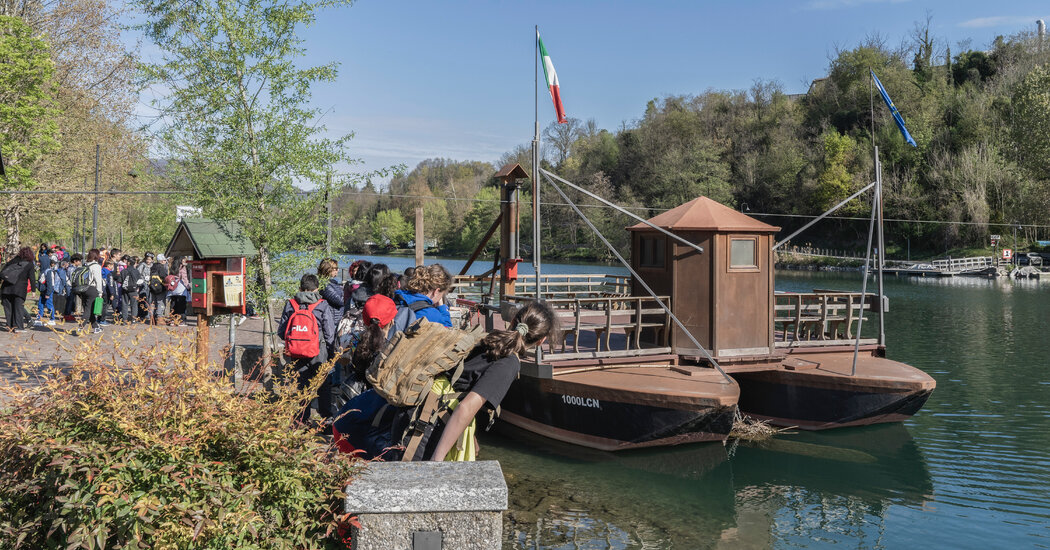On a recent sunny morning on the banks of the Adda River in northern Italy, schoolchildren on a class trip to Imbersago — the “Town of the Ferry of Leonardo da Vinci” — gathered next to a moored boat and listened as a guide explained how the flights of the river’s birds, the formations of its rocks and the workings of its ships inspired Leonardo’s genius.
“Why doesn’t it move?” one of the students interrupted, pointing to the ferry, which sat behind a chain and a sign reading, “Service suspended.” It looked like a deserted summer deck atop two rowboats.
“The water needs to be high enough for the current to move it,” answered Sara Asperti, 45. “Also, they’re looking for a new ferryman. So if any of you are interested.”
Since at least 500 years ago, when the opposing banks of the Adda belonged to the Duchy of Milan and the Republic of Venice, ferries have run on water currents and a taut rope above a narrow stretch of the river. Leonardo spent a lot of time in the area and sketched the motorless ferry around 1513. Later, the invention of the ferry, or its improvement, was attributed to him, though locals say no one knows for sure.
In the past century, reproductions of the original ferries have linked Italy’s Lecco and Bergamo Provinces, allowing wool factory workers to commute, a young Pope John XXIII to visit a favorite shrine and, more recently, tourists and cyclists to enjoy the nature paths and yellow fields of rapeseed.
But a year after Italy’s worst drought in seven decades — when much of Europe gasped for precipitation — a winter without much rain or snow has turned into a dry spring across the country’s north. In Piedmont, water tanks are already supplying a small mountain village with drinking water. The Po River valley, usually lush and rich in rice, is parched. In March, a member of Parliament brandished river stones that he collected from the dry Adige River to accuse Prime Minister Giorgia Meloni of inaction.
“I’m not Moses,” she responded.
This month, the government established a task force to tackle the scarcity of rainfall, which has also hit the Adda, where swans glide on water so low that islands have emerged, rowboats are beached and the last of what the town calls “Leonardesque” ferries has become a stationary landmark.
“If it becomes a monument, or something static, it loses its meaning,” said Fabio Vergani, Imbersago’s mayor, as he sat on the ferry, big enough to hold three cars…
Click Here to Read the Full Original Article at NYT > Travel…
